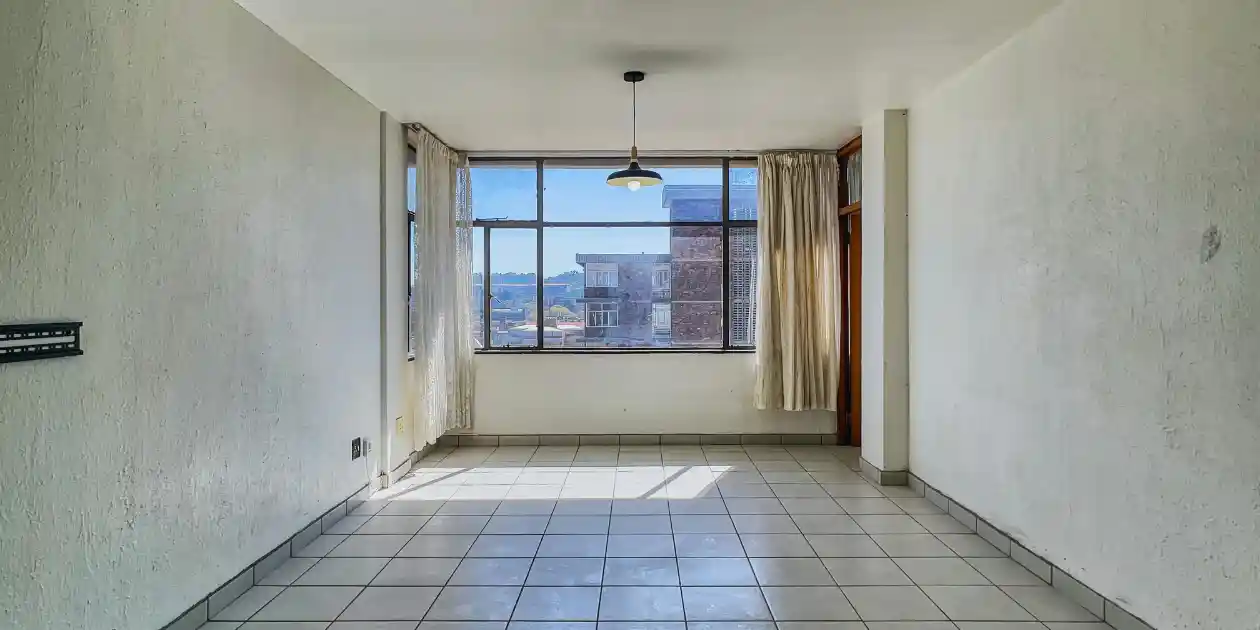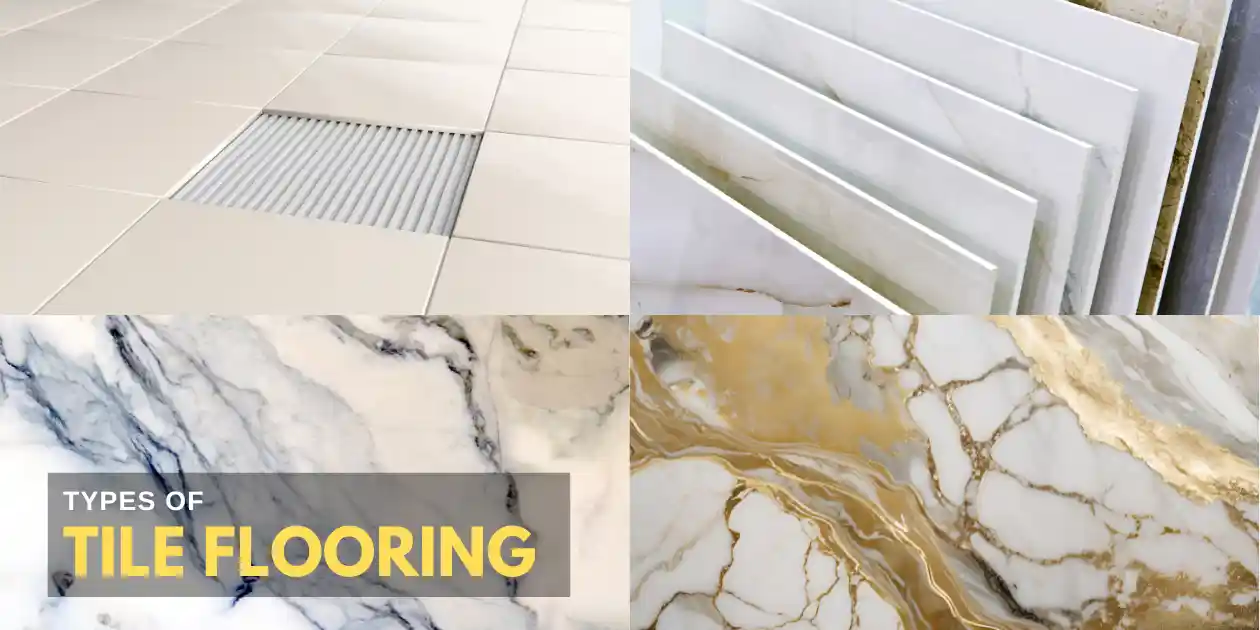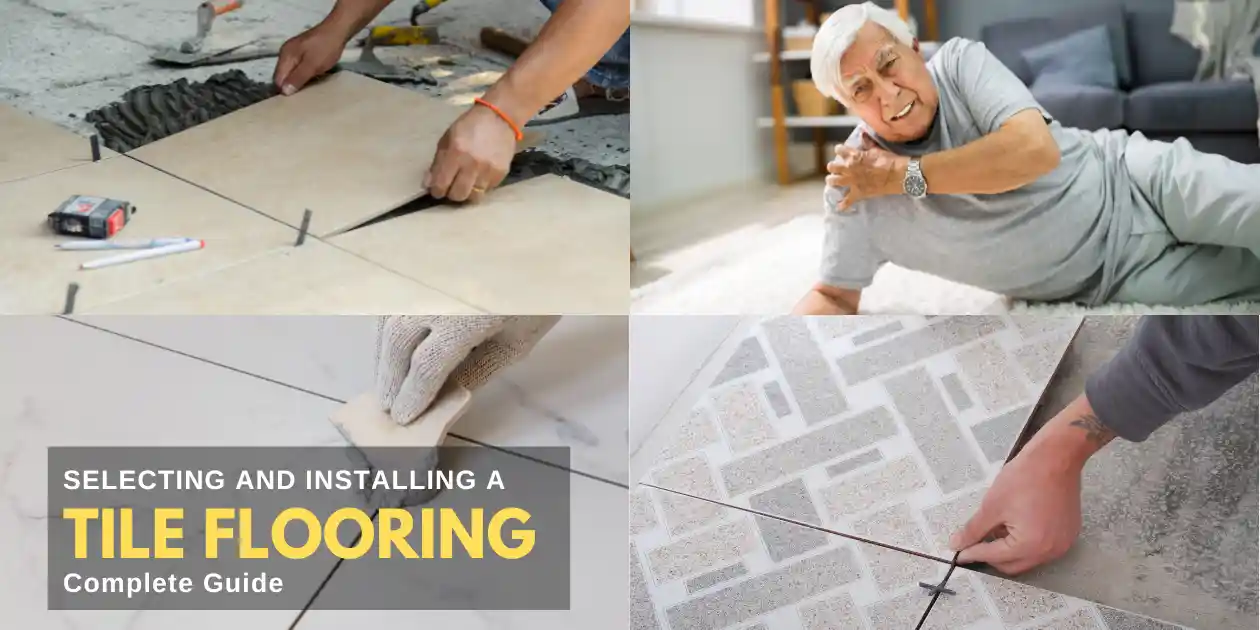Floors are the foundation of any room’s design. It establishes the atmosphere for the space and withstands the wear and tear of daily life, and is an essential part in the overall appearance and value. In the many flooring options available tiles, tile flooring stands in its own class. It is known for its incredible durability as well as its water resistance and remarkable design flexibility. It has been a preferred option for a long time and covers everything from early roman baths to contemporary kitchens.
The decision of choosing the best tile is a daunting task. There is numerous types of tiles in sizes shapes, designs, finishes and ratings each with distinct characteristics. A tile suitable for bathrooms might be unsuitable for an entryway that receives lots of traffic, while the tile that looks stunning in a showroom may be difficult to keep clean in a kitchen that has a large amount activities.

This comprehensive guide was designed to assist you in getting more understanding of the world of tiles. We’ll look at the most well known varieties of tiles, ranging from traditional ceramic to luxury marble, and offer an objective review of their advantages and disadvantages. We’ll discuss the cost and guide you to pick the right tile for your requirements.
We’ll also provide an expert opinion on maintaining the tile flooring to ensure your flooring will last for long periods of time. If you’re considering an extensive overhaul or minor change this guide will assist you make a well informed decision and select a tile flooring that’s not only beautiful but also an ideal fit to your lifestyle and the design of your home.
Types of Tile Flooring
Understanding the main differences among tiles are the most important stage. Each tile flooring type comes with its own particular combination of water resistance and aesthetics.

1. Ceramic Tiles:
A classic and well loved ceramic tile flooring is produced by mixing clay and minerals which are then fired at a very extreme temp. It is typically covered with a tough glaze with a design and the color. it is ideal for areas that have moderate traffic, such bathrooms, laundry rooms and the wall mounted backsplashes.
Key Features:
- PEI (Porcelain Enamel Institute) assessment is vital for ceramic tiles.
- PEI shows its durability and hardness within a range of 1 (walls only) to 5 (heavy commercial uses).
2. Porcelain Tile:
Porcelain tile flooring is a type of ceramic tile. It’s composed of clay that is much finer and thicker, and fired at higher temperatures. This makes it stronger, more durable and less porous and being more durable than conventional ceramic tiles. It is recommended to be used in places that will get often utilized, such as kitchens hallways, or entryways as well they are wet areas, such as shower floors, or outdoor spaces.
Key Features:
- Its lower absorption (less that 0.5 percentage) is the reason it is nearly unbreakable as well as frostproof.
- Through bodied porcelain can be described as having a color is a continuous flow throughout along the width of the tiles.
- This can be extremely effective in obscuring chips and scratches.
3. Quarry Tile:
Created by mixing non glazed clays the quarry tile has a rough texture and an earthy appearance and an orange-reddish brown hue. It’s extremely durable and naturally impervious to slippage, but its porousness means that it is necessary to seal it to prevent getting stained. It’s a ideal choice for patios and kitchens.
4. Luxury Vinyl Tile (LVT):
Although it’s not a typical tile, it has risen to become a significant competitor due to its incredible efficiency. The tile is a synthetic multi-layered material that is able to replicate the appearance of porcelain wood, or stone. It’s 100 percent waterproof, much more comfortable and warm underfoot than ceramic and is incredibly sturdy.
5. Natural Stone:
Tile derived directly to nature. Stone features an exquisite elegant and luxurious appearance that is difficult for anyone to copy. Each tile is unique and features a distinct patterns, colors, and even the texture. But, most stone is impervious and needs to be sealed frequently to avoid staining.
1. Marble:
The marble is characterized by elegant veining and a refined attractive appearance. It’s a soft stone, which makes it more prone to scratching and staining, so it’s best suited to luxurious bathroom and entranceways.
2. Granite:
It is among the strongest and longest lasting natural stones. Granite is very resistant to scratches and stains once protected. It’s a excellent choice for countertops and kitchen flooring.
3. Travertine:
It is distinguished by its earthy gentle tones as well as its naturally pitted, natural surface. it has a warm, rustic look. This is an impervious stone that requires sealing. It’s typically purchased “filled,” where the pits on the surface are filled with resin to give greater smoothness.
4. Slate:
Slate is a hard metamorphic rock which is tough and durable. It is well-known for its natural-textured, smooth and slip-resistant surface. This makes it an excellent option for outdoor patios, entranceways and mudrooms. Its colors are generally darker, with hues of gray green, black and blue.
Pros and Cons of Tile Flooring: A Balanced View
| Pros of Tile Flooring | Cons of Tile Flooring |
|---|---|
| Superior Durability: Both granite and porcelain are incredibly hard to scratch or break, making them perfect for high-traffic spaces and homes with children and pets. | Extremely hard and brittle: The hardness means that dropped plates or glasses will likely break, and it can be uncomfortable to sit on the floor for long periods. |
| Super Resistant to Water: Glazed ceramics and porcelain are resistant to water, making them ideal for bathrooms, kitchens, and laundry areas. | Cold beneath the feet: Tile does not retain heat and can be very cold in winter, especially in basements. This can be solved with radiant floor heating. |
| Hygienic and Low Maintenance: Tiles are easy to clean and do not harbor pollen, dust mites, or other allergens. Spills can be easily wiped away. | Grout Line Maintenance: Grout is porous and can absorb stains and mildew if not sealed properly. Regular cleaning and sealing are necessary. |
| Incredible Design Flexibility: With unlimited patterns, colors, shapes, and sizes, tiles can suit any design style, from farmhouse to ultra modern. | Slippery Surface: Highly polished tiles can become very slippery when wet. Choose tiles with a higher coefficient of friction (COF) for wet areas. |
| Improves the Value of Your Home: Professionally installed, high-quality tiles can greatly increase your home’s resale value. | Costly and Laborious to Install: Tile installation is labor-intensive, requires a perfectly prepared subfloor, and is best handled by professionals raising total costs. |
| Radiant Heat Compliant: Tile conducts heat efficiently, making it one of the best flooring options for underfloor radiant heating systems. | Predisposed to Cracking: Despite their strength, tiles can crack if heavy objects are dropped or if the subfloor is improperly prepared. |
Cost of Tile Flooring by Type
The price you pay for tiles is the result of flooring materials used and the labor required for installation. Natural stone is typically the most costly of flooring options, however, LVT and ceramic are both cheaper.
| Tile Type | Average Price (per sq. ft.) | Cost-Related Key Factors |
|---|---|---|
| Ceramic | $1 – $15 | Basic designs are inexpensive. Complex patterns and designs cost more. |
| Porcelain | $3 – $30 | Costs increase for through bodied ceramic, large dimensions, and reshaped edges. |
| Luxury Vinyl Tile (LVT) | $2 – $10 | Longer-lasting wear layers and more realistic textures can increase the price. |
| Quarry Tile | $3 – $12 | American tiles are typically cheaper than imported European tiles. |
| Slate | $4 – $15 | Price varies based on color, quality, and consistency of cut. |
| Travertine | $4 – $20 | “Filled” and honed tiles are more expensive than unfilled, tumbled tiles. |
| Granite | $5 – $25 | Rarity and color are the main cost factors. |
| Marble | $8 – $40 | Highly dependent on veining type and source (e.g., Carrara vs. Calacatta). |
Note: Professional installation usually costs $5–$15 per square foot depending on project scope, subfloor preparation, and local market rates.
A Step by Step Guide to Selecting and Installing a Tile Flooring

1. Picking the Right Tile:
Review the room’s purpose It is the first thing to determine what the room’s purpose is. A master bathroom needs tiles that are water proof and non slip. Kitchens require tiles that are sturdy and resistant to staining. A hallway requires a tile for the entry way that is of high PEI ratings to stand up to the rigors of high use by pedestrians.
Be sure to verify for your PEI Rating for durability. Tiles PEI score should be compared to the level of traffic in your room.
- PEI 1. Only wall. No pedestrians.
- PEI 2. Traffic light (e.g. residential bathrooms).
- PEI 3. Moderate or light-traffic (e.g. floors, countertops, and counters in residential structures ).
- PEI 4. Moderate in high traffic areas (e.g. residential commercial, all areas, and light ).
- PEI 5. Internet traffic ranging from heavy to very heavy (all residential and commercial uses).
2. Prioritize the Slip Resistance (COF score):
The coefficient of friction (COF) is the measurement of Slip resistance. For floor tiles, especially in areas that have water, search for a the DCOF (Dynamic Coefficient of Friction) rating of 0.42 or higher, that is the industry standard for commercial and residential security.
3. Be Aware of Grout Color:
The grout color determines what appears in the end. A grout color that matches gives an appearance that resembles a single seamless look. A distinct color can emphasize the design and patterns of the individual tile. The epoxy grout may be more costly but it provides superior stain resistance and water resistance compared to standard grout that is made of cement.
4. The Plan for Tile Installation:
It is an activity which requires precision. The subfloor must be solid, smooth and free of dirt to prevent fractures. If you’re not a professional diyer, choosing an expert to install your flooring is an excellent option to protect your flooring investment.
5. Buy Extras:
Always buy 10 to 15 percent more tiles than you need. It is because this “overage” accounts for cuts and omissions, and also the risk of breaking, and make sure you have the exact tiles you need to complete the repairs.
Maintenance and Longevity of Tile Flooring
A single of its major selling features is its simple maintenance. However, proper treatment is vital to keep it looking new.
- Clean regularly by scrubbing or vacuuming to remove dirt and grit that’s rough. Mop regularly using a pH neutral cleaning solution and wash using water. Beware of harsh chemical substances, such as bleach or ammonia. They can harm grout and the tiles’ surface.
- Grout is the weakest part of the defense system of the floor tile. It must be sealed after installation to guard against water and staining. This seal must be maintained every 3 to 5 years, depending on the traffic volume.
- Cleaning grout intensively to remove grout that has been stained, create a paste using baking soda along with water and. Spread it over the grout areas, and then allow it to rest for a few minutes, then remove it using an abrasive. Be cautious when brushing with wires, which could cause damage to grout.
- Make sure that your flooring is secured by putting mats by all the doors on your exterior to catch dust. Place felt pads underneath furniture legs to prevent scratches, particularly on soft stones like marble. Clean up any acidic spills like wine, juice or coffee, as soon as you can to avoid staining the grout and granite.
Common Mistakes to Avoid For Tile Flooring
- A poor subfloor preparation is the primary reason for tile installations to fail and can cause broken the grout or tiles.
- The use of a sealed or porous tile for the shower or a non rated ceramic tile in a hallway that is crowded can cause failure before it’s time to replace it.
- A failure to seal naturally made stone or grout could cause permanent water damage as well as permanent staining.
- If you don’t order 15 % more tiles it can bring a project to a halt or make the repair unattainable.
Conclusion
Tile Flooring is a beautiful combination of beauty and practicality. It is an ideal solution for nearly every home space providing a sturdy, water-proof, hygienic and water-resistant flooring which can be modified to match any design. Although the initial cost of the flooring as well as installation done by an expert could be higher than other flooring options, its durability for a long time and positive effect on the worth of your home make it a wise choice.
Understanding the different differences between different types of tile flooring that meet the requirements of your tile to the purpose of the space, and ensuring that you conduct regular cleaning, you’ll make sure that your flooring tiles provide an attractive and long lasting foundation to your home for years to be.
FAQs
What is the most significant difference between ceramic tile flooring and porcelain?
Porcelain is the more durable and stronger counterpart to ceramic. Both are made from clay, but porcelain uses finer, denser clay and is fired at higher temperatures. This makes porcelain highly resistant to water (less than 0.5% absorption), scratches, and stains. While ceramic is great for moderate-traffic areas like bathrooms, porcelain is ideal for high-traffic and wet areas such as kitchens, entryways, shower floors, and even outdoor installations.
Is natural stone tile flooring a good option for busy kitchens or family bathrooms?
It can be, but it depends on your commitment to maintenance. Hard stones like slate and granite are durable and handle heavy traffic well. Softer stones like marble and travertine are more prone to scratches and stains. All natural stone is porous and must be sealed after installation and resealed regularly (usually annually) to protect against stains and moisture. If you want low maintenance, porcelain is a better alternative.
What is the best type of tile flooring for shower?
The best option for shower floors is ceramic or porcelain mosaic tile. Porcelain is nearly waterproof and extremely durable. Small tiles (like 2-inch mosaics) are ideal because the extra grout lines provide a non-slip surface, which is essential for safety in wet, soapy environments.
Tiles feel cold and hard. Is there anything I can do to change this?
Yes! Use runners and area rugs in high-traffic areas for warmth and comfort. For the best solution, install an electric heating system under the tiles—tile is an excellent heat conductor. For added comfort, use cushioned mats or carpets, especially near the kitchen sink or stove, to reduce foot and joint fatigue.
What if I drop something heavy and a tile breaks? Can it be repaired?
Yes, a broken tile can be replaced without redoing the entire floor. Carefully remove the grout around the damaged tile, chisel out the broken pieces, clean the area, and install a new tile with mortar. Always buy 10–15% extra tiles during your initial purchase for future repairs.
Why are my tiles cracking even though nothing was dropped on them?
This usually indicates a problem with the subfloor. If the subfloor isn’t flat and solid, it can flex or move slightly underfoot, causing stress and cracks in the rigid tiles. Proper subfloor preparation is essential before installing any tile floor.
